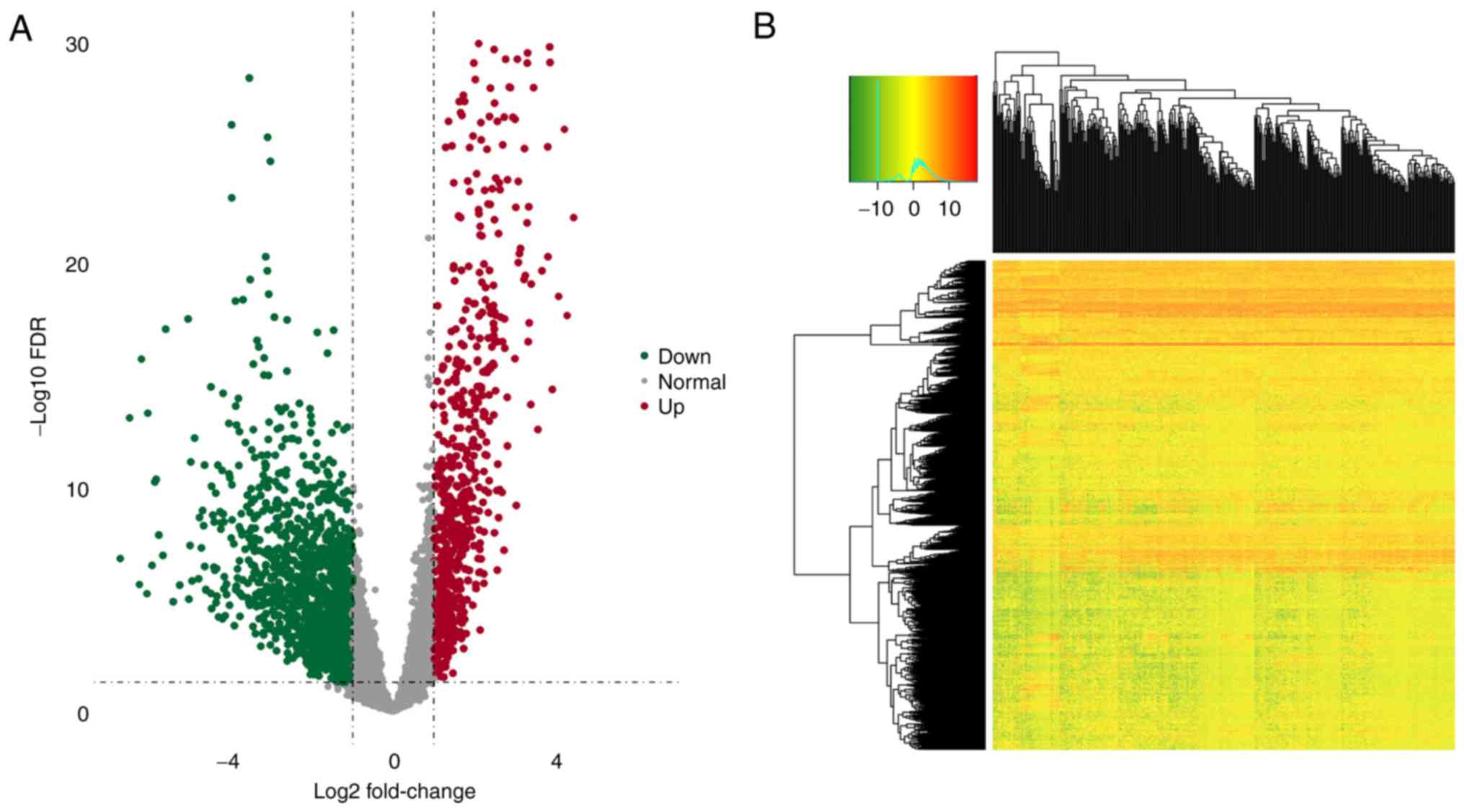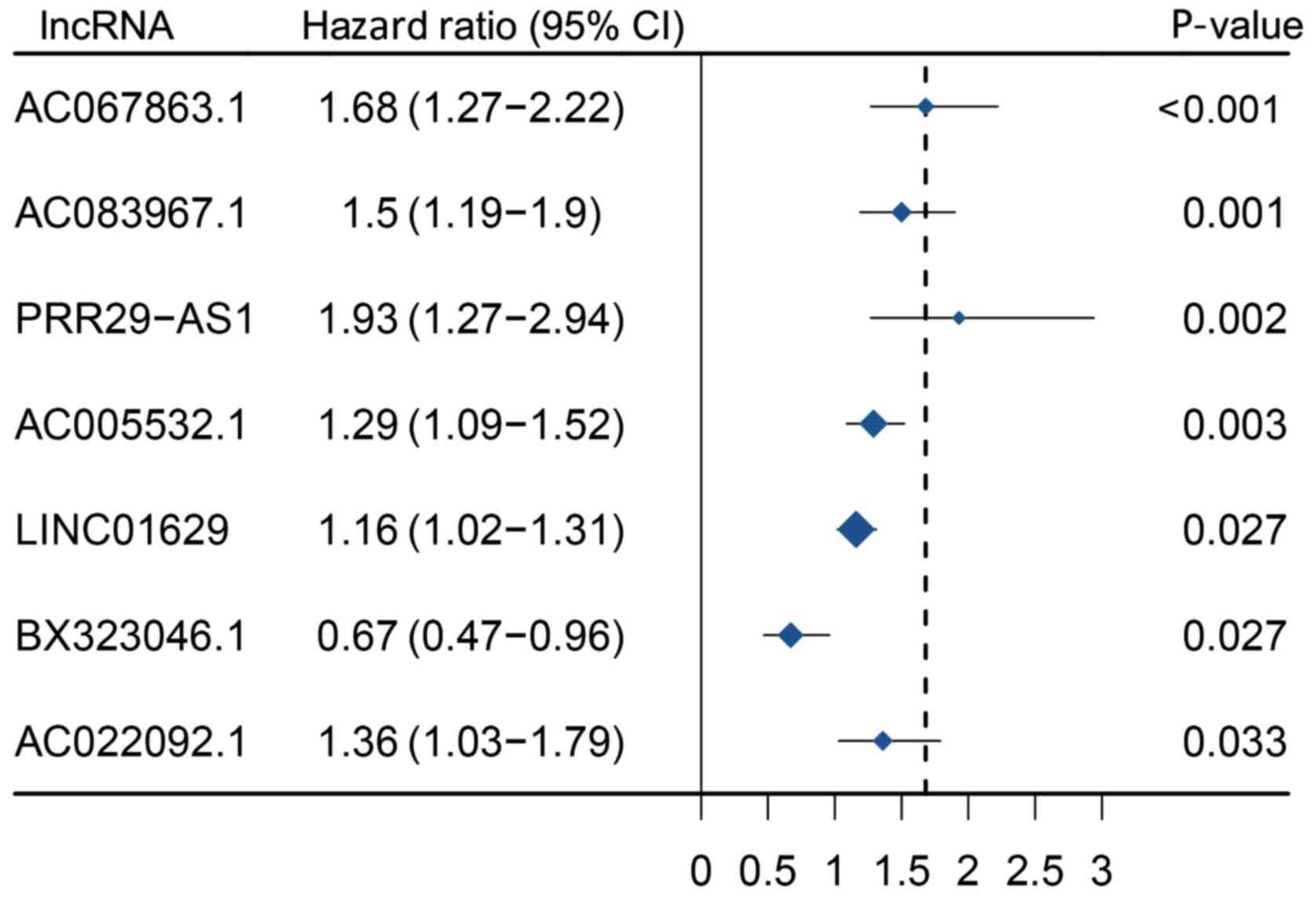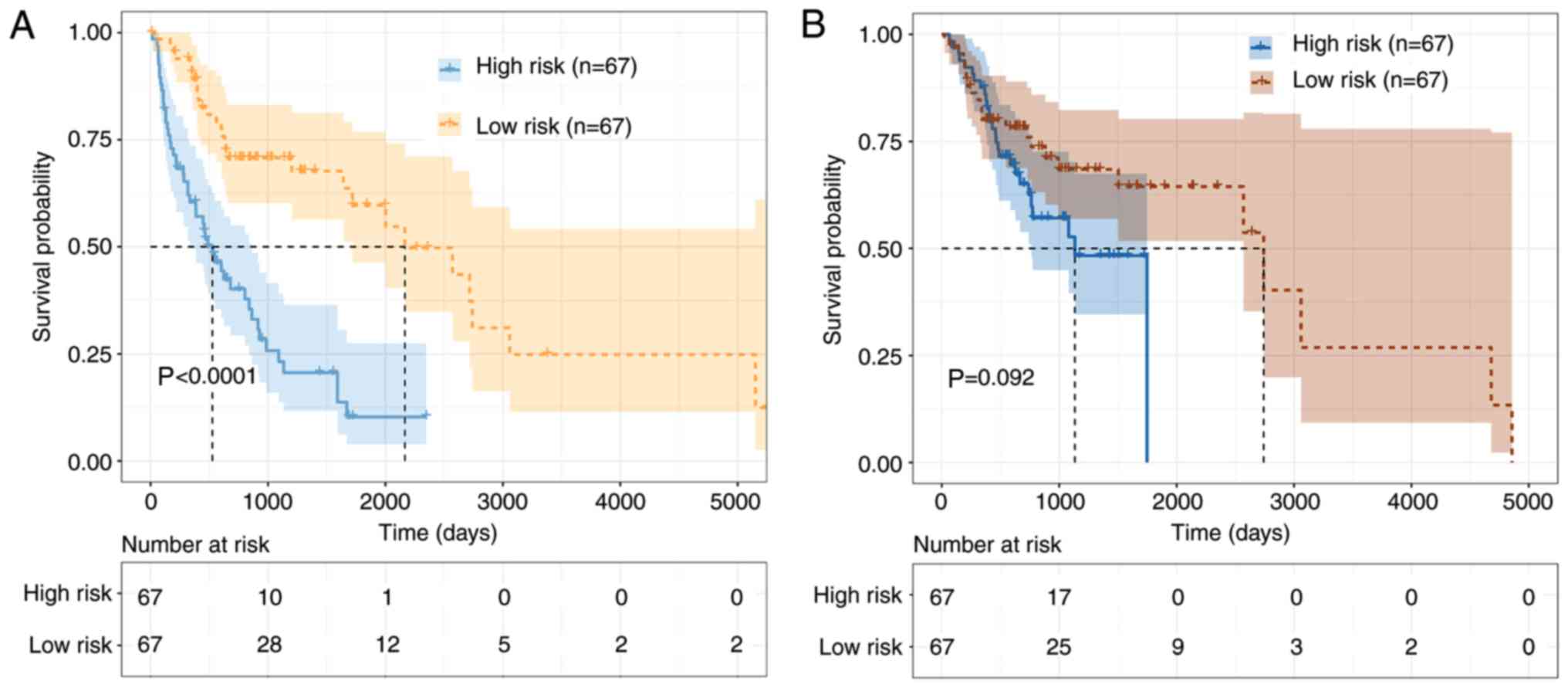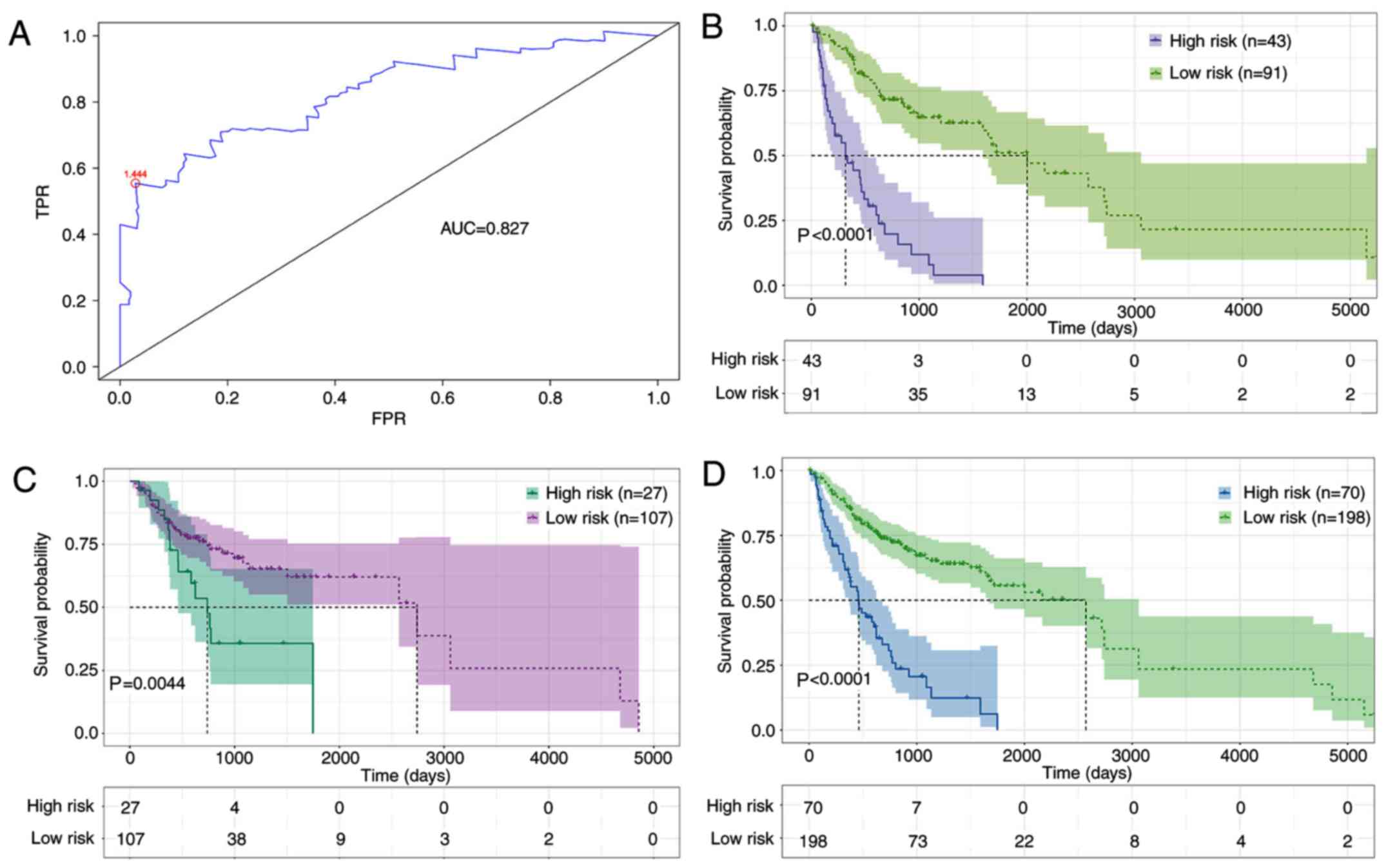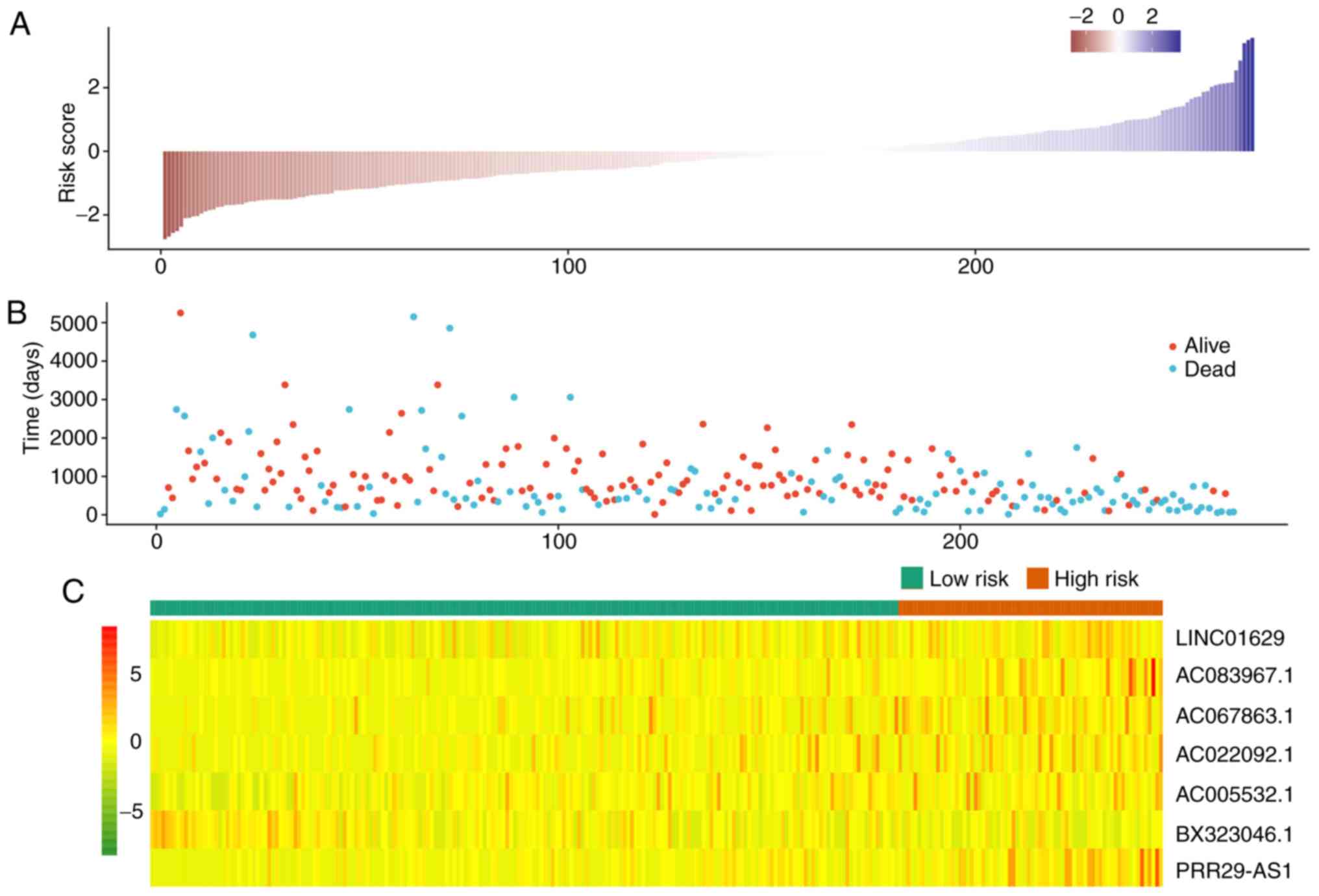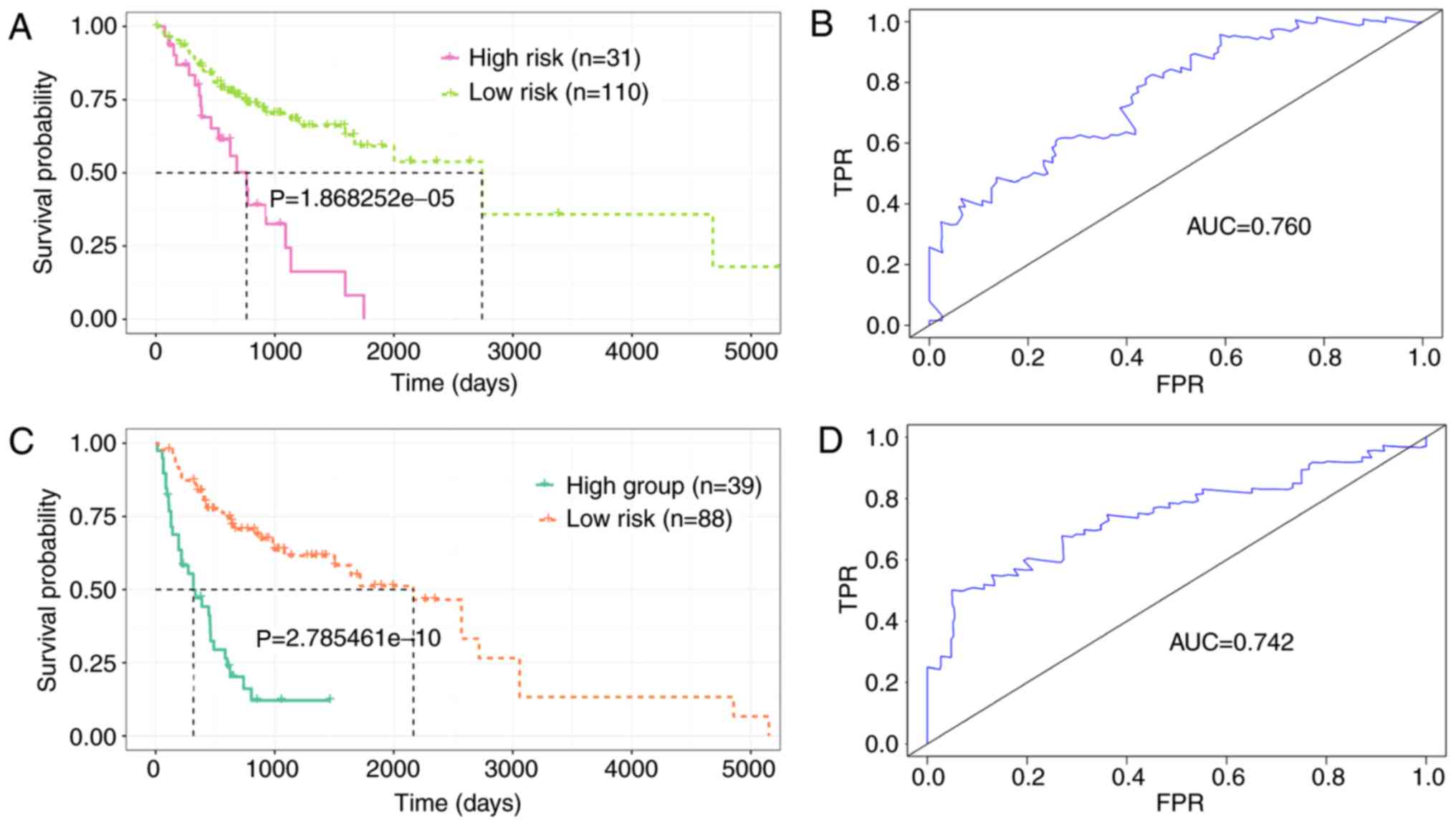|
1
|
Chan GG, Tai BC, Liang S, Lim DT and Soo
KC: Squamous cell carcinoma of the head and neck
(HNSCC)-multi-modality treatment and impact on survival. Asian J
Surg. 25:35–40. 2002.PubMed/NCBI
|
|
2
|
Friemel J, Foraita R, Günther K, Heibeck
H, Günther G, Pflueger M, Pohlabeln H, Behrens T, Bullerdiek J,
Nimzyk R and Ahrens W: Pretreatment oral hygiene habits and
survival of head and neck squamous cell carcinoma (HNSCC) patients.
BMC Oral Health. 16:332016. View Article : Google Scholar : PubMed/NCBI
|
|
3
|
Koch FP, Kunkel M, Biesterfeld S and
Wagner W: Diagnostic efficiency of differentiating small cancerous
and precancerous lesions using mucosal brush smears of the oral
cavity-a prospective and blinded study. Clin Oral Investig.
15:763–769. 2011. View Article : Google Scholar : PubMed/NCBI
|
|
4
|
Snow GB, Annyas AA, Slooten EA Van,
Bartelink H and Hart AA: Prognostic factors of neck node
metastasis. Clin Otolaryngol Allied Sci. 7:185–192. 2010.
View Article : Google Scholar
|
|
5
|
Mcguire S: Geneva, Switzerland: World
Health Organization, International Agency for Research on cancer,
WHO Press, 2015. Adv Nutr. 7:418–419. 2016. View Article : Google Scholar : PubMed/NCBI
|
|
6
|
Kokemueller H, Rana M, Rublack J, Eckardt
A, Tavassol F, Schumann P, Lindhorst D, Ruecker M and Gellrich NC:
The Hannover experience: Surgical treatment of tongue cancer-A
clinical retrospective evaluation over a 30 years period. Head Neck
Oncol. 3:272011. View Article : Google Scholar : PubMed/NCBI
|
|
7
|
Stein LD: Human genome: End of the
beginning. Nature. 431:915–916. 2004. View
Article : Google Scholar : PubMed/NCBI
|
|
8
|
Brosnan CA and Voinnet O: The long and the
short of noncoding RNAs. Curr Opin Cell Biol. 21:416–425. 2009.
View Article : Google Scholar : PubMed/NCBI
|
|
9
|
Gibb EA, Brown CJ and Wan Lam WL: The
functional role of long non-coding RNA in human carcinomas. Mol
Cancer. 10:382011. View Article : Google Scholar : PubMed/NCBI
|
|
10
|
Tano K and Akimitsu N: Long non-coding
RNAs in cancer progression. Front Genet. 3:2192012. View Article : Google Scholar : PubMed/NCBI
|
|
11
|
Peng C, Hu W, Weng X, Tong R, Cheng S,
Ding C, Xiao H, Lv Z, Xie H, Zhou L, et al: Over expression of long
Non-coding RNA PANDA promotes hepatocellular carcinoma by
inhibiting senescence Associated inflammatory factor IL8. Sci Rep.
7:41862017. View Article : Google Scholar : PubMed/NCBI
|
|
12
|
Lu X, Liu Z, Ning X, Huang L and Jiang B:
The long noncoding RNA HOTAIR promotes colorectal cancer
progression by sponging miR-197. Oncol Res. 26:473–481. 2018.
View Article : Google Scholar : PubMed/NCBI
|
|
13
|
Zhao C, Zou H, Wang J, Shen J and Liu H: A
three long noncoding RNA-Based signature for oral squamous cell
carcinoma prognosis prediction. DNA Cell Biol. 37:888–895. 2018.
View Article : Google Scholar : PubMed/NCBI
|
|
14
|
Diao P, Song Y, Ge H, Wu Y, Li J, Zhang W,
Wang Y and Cheng J: Identification of 4-lncRNA prognostic signature
in head and neck squamous cell carcinoma. J Cell Biochem.
120:10010–10020. 2019. View Article : Google Scholar : PubMed/NCBI
|
|
15
|
Song Y, Pan Y and Liu J: Functional
analysis of lncRNAs based on competitive endogenous RNA in tongue
squamous cell carcinoma. PeerJ. 7:e69912019. View Article : Google Scholar : PubMed/NCBI
|
|
16
|
Colaprico A, Silva TC, Olsen C, Garofano
L, Cava C, Garolini D, Sabedot TS, Malta TM, Pagnotta SM,
Castiglioni I, et al: TCGAbiolinks: An R/Bioconductor package for
integrative analysis of TCGA data. Nucleic Acids Res. 44:e712016.
View Article : Google Scholar : PubMed/NCBI
|
|
17
|
Robinson MD, Mccarthy DJ and Smyth GK:
edgeR: A Bioconductor package for differential expression analysis
of digital gene expression data. Bioinformatics. 26:139–140. 2010.
View Article : Google Scholar : PubMed/NCBI
|
|
18
|
Mao X, Qin X, Li L, Zhou J, Zhou M, Li X,
Xu Y, Yuan L, Liu QN and Xing H: A 15-long non-coding RNA signature
to improve prognosis prediction of cervical squamous cell
carcinoma. Gynecol Oncol. 149:181–187. 2018. View Article : Google Scholar : PubMed/NCBI
|
|
19
|
Dong J and Xu M: A 19-miRNA Support Vector
Machine classifier and a 6-miRNA risk score system designed for
ovarian cancer patients. Oncol Rep. 41:3233–3243. 2019.PubMed/NCBI
|
|
20
|
Qiu Z, Sun W, Gao S, Zhou H, Tan W, Cao M
and Huang W: A 16-gene signature predicting prognosis of patients
with oral tongue squamous cell carcinoma. Peerj. 5:e40622017.
View Article : Google Scholar : PubMed/NCBI
|
|
21
|
Zhou Y, Kolokythas A, Schwartz JL, Epstein
JB and Adami GR: microRNA from brush biopsy to characterize oral
squamous cell carcinoma epithelium. Cancer Med. 6:67–78. 2017.
View Article : Google Scholar : PubMed/NCBI
|
|
22
|
Djebali S, Davis CA, Merkel A, Dobin A,
Lassmann T, Mortazavi A, Tanzer A, Lagarde J, Lin W, Schlesinger F,
et al: Landscape of transcription in human cells. Nature.
489:101–108. 2012. View Article : Google Scholar : PubMed/NCBI
|
|
23
|
Li CH and Chen Y: Targeting long
non-coding RNAs in cancers: Progress and prospects. Int J Biochem
Cell Biol. 45:1895–1910. 2013. View Article : Google Scholar : PubMed/NCBI
|
|
24
|
Fatica A and Bozzoni I: Long non-coding
RNAs: New players in cell differentiation and development. Nat Rev
Genet. 15:7–21. 2014. View
Article : Google Scholar : PubMed/NCBI
|
|
25
|
Rinn JL and Chang HY: Genome regulation by
long noncoding RNAs. Ann Rev Biochem. 81:145–166. 2012. View Article : Google Scholar : PubMed/NCBI
|
|
26
|
Liu Y, Chang Y, Lu S and Xiang YY:
Downregulation of long noncoding RNA DGCR5 contributes to the
proliferation, migration, and invasion of cervical cancer by
activating Wnt signaling pathway. J Cell Physiol. 234:11662–11669.
2019. View Article : Google Scholar : PubMed/NCBI
|
|
27
|
Guo Y, Ma Y, Hu X, Song R, Zhu L and Zhong
M: Long non-coding RNA CEBPA-AS1 correlates with poor prognosis and
promotes tumorigenesis via CEBPA/Bcl2 in oral squamous cell
carcinoma. Cancer Biol Therapy. 19:205–213. 2017. View Article : Google Scholar
|
|
28
|
Fang Z, Zhao J, Xie W, Sun Q, Wang H and
Qiao B: LncRNA UCA1 promotes proliferation and cisplatin resistance
of oral squamous cell carcinoma by sunppressing miR-184 expression.
Cancer Med. 6:2897–2908. 2017. View Article : Google Scholar : PubMed/NCBI
|
|
29
|
Liang S, Zhang S, Wang P, Yang C, Shang C,
Yang J and Wang J: LncRNA, TUG1 regulates the oral squamous cell
carcinoma progression possibly via interacting with
Wnt/beta-catenin signaling. Gene. 608:49–57. 2017. View Article : Google Scholar : PubMed/NCBI
|
|
30
|
Li S, Chen X, Liu X, Yu Y, Pan H, Haak R,
Schmidt J, Ziebolz D and Schmalz G: Complex integrated analysis of
lncRNAs-miRNAs-mRNAs in oral squamous cell carcinoma. Oral Oncol.
73:1–9. 2017. View Article : Google Scholar : PubMed/NCBI
|
|
31
|
Tomczak K, Czerwinska P and Wiznerowicz M:
The cancer genome atlas (TCGA): An immeasurable source of
knowledge. Contemp Oncol (Pozn). 19:A68–A77. 2015.PubMed/NCBI
|
|
32
|
Cancer Genome Atlas Research Network, .
Weinstein JN, Collisson EA, Mills GB, Shaw KR, Ozenberger BA,
Ellrott K, Shmulevich I, Sander C and Stuart JM: The Cancer Genome
Atlas Pan-Cancer analysis project. Nat Genet. 45:1113–1120. 2013.
View Article : Google Scholar : PubMed/NCBI
|
|
33
|
Yin H, Wang X, Zhang X, Wang Y, Zeng Y,
Xiong Y, Li T, Lin R, Zhou Q, Ling H, et al: Integrated analysis of
long noncoding RNA associated-competing endogenous RNA as
prognostic biomarkers in clear cell renal carcinoma. Cancer Sci.
109:3336–3349. 2018. View Article : Google Scholar : PubMed/NCBI
|
|
34
|
Zhou M, Zhang Z, Zhao H, Bao S, Cheng L
and Sun J: An immune-related six-lncrna signature to improve
prognosis prediction of glioblastoma multiforme. Mol Neurobiol.
55:3684–3697. 2018.PubMed/NCBI
|
|
35
|
Wang R, Du L, Yang X, Jiang X, Duan W, Yan
S, Xie Y, Zhu Y, Wang Q, Wang L, et al: Identification of long
noncoding RNAs as potential novel diagnosis and prognosis
biomarkers in colorectal cancer. J Cancer Res Clin Oncol.
142:2291–2301. 2018. View Article : Google Scholar
|















